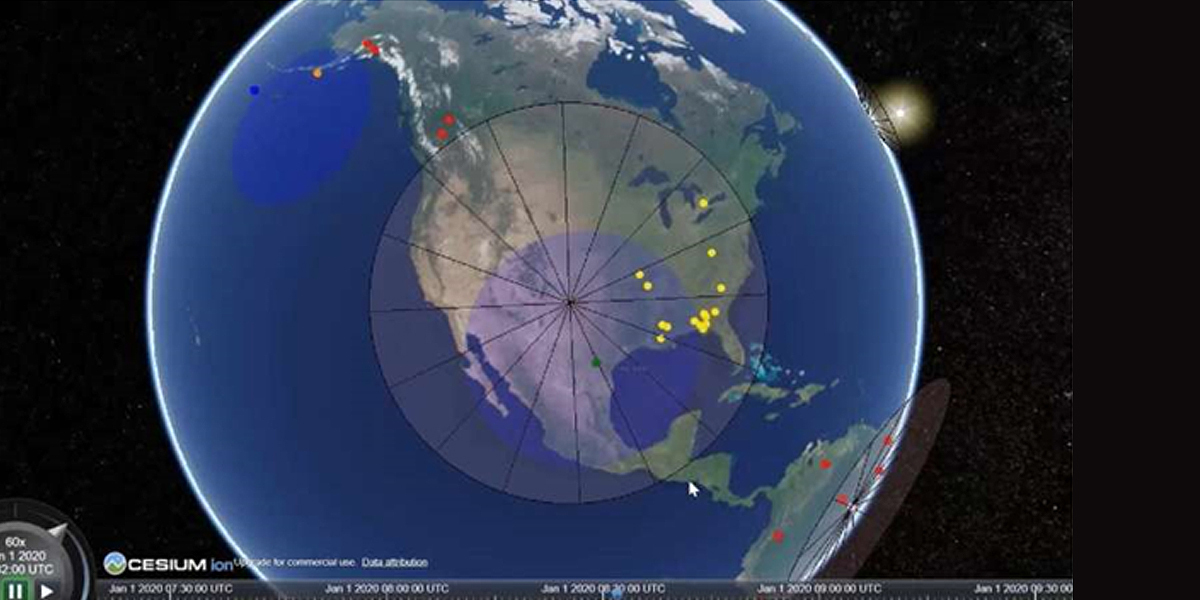Researchers at Stevens Institute of Technology in New York, USA, have created a digital platform that enables dozens of organizations to model information exchanges between fleets of orbital devices and land-based antennae to manage complex Earth science problems such as spotting wildfires. The platform is called the New Observing Strategies Testbed, or NOS-T for short.

There are roughly 7,000 satellites whizzing around Earth, scanning our planet's surface and generating hundreds of terabytes of data every day. These satellites are operated by many different governments and commercial entities, and the data they produce are scattered across different stakeholders with different agendas, making it impossible for any single research team to leverage the full potential of the world's orbital sensors.
"NOS-T gives researchers a way to quickly prototype collaborative space research projects, said Paul Grogan, an associate professor of systems engineering at Stevens who led the project. "It eliminates many of the challenges that might otherwise prevent these distributed missions from being developed."
In their work, reported in Systems Engineering, Grogan and colleagues at Stevens describe how networked satellites can be used to generate much more detailed images, giving a vastly better picture of what's happening on the Earth's surface. Using multiple satellites also makes it easier to monitor specific locations continuously, which is important when trying to track wildfires or monitor water-saturated soil to predict landslides. In contrast, individual satellites can only scan the areas they're passing over.
NOS-T works by enabling organizations to independently model their own satellites and data, then exchange messages containing limited amounts of approved data. Effectively, NOS-T acts as connective tissue, enabling organizations to connect devices and share data without providing one another with direct access to sensitive information about the data, control algorithms, and other technologies they're using.
Such safeguards are the only way to persuade private organizations that it's safe to share data, or to convince governments to put national rivalries aside and collaborate on joint research projects, explained Grogan. "These kinds of partnerships aren't easy, but if you can't figure out how to work together using a digital simulation, you'll never be able to collaborate on real-world space missions," he said.
NOS-T will soon be deployed in planning real-world space missions, with NASA's Earth Science and Technology Office set to begin using NOS-T to evaluate mission proposals next year, and some mission designers already using NOS-T to validate new research frameworks before applying for federal funding. "Using NOS-T, you can check that the distributed aspects of a space project are feasible before you start pouring millions of dollars into building equipment and launching satellites," Grogan said.
In the future, collaborative digital platforms like NOS-T could help satellites communicate with one another directly, with messages processed by onboard AI algorithms to automatically coordinate sensors around shared research goals. For now, the goal is to streamline the process of developing and validating distributed missions, helping researchers around the world make better use of the data raining down from the world's orbital sensors.
"With the cost of space launches coming down, we're seeing all kinds of organizations starting to put sensors in orbit," said Grogan. "That means the future of space research will have to be collaborative—but first, we need to be able to model and test collaborative relationships just as thoroughly as we test the hardware we're using."
More information: Brian Chell et al, New observing strategies testbed: A digital prototyping platform for distributed space missions, Systems Engineering (2023). DOI: 10.1002/sys.21672
Provided by Stevens Institute of Technology
Subscribe to our newsletter
Stay updated on the latest technology, innovation product arrivals and exciting offers to your inbox.
Newsletter

